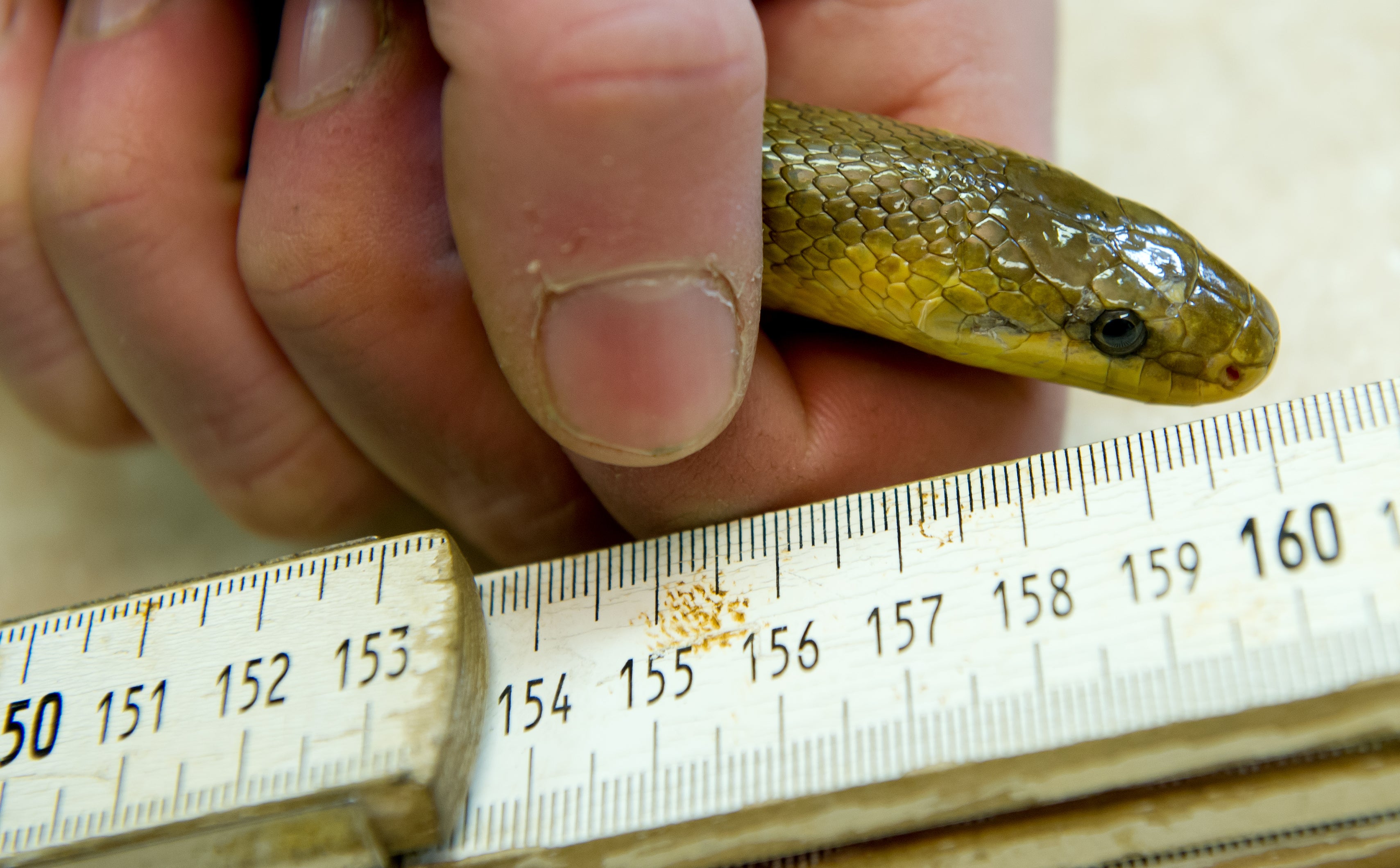Invasive 2m-long snake breeding inside walls and attics across UK, scientists warn
Aesculapian snake’s behaviour is ‘unusual’ compared to native species
Your support helps us to tell the story
From reproductive rights to climate change to Big Tech, The Independent is on the ground when the story is developing. Whether it's investigating the financials of Elon Musk's pro-Trump PAC or producing our latest documentary, 'The A Word', which shines a light on the American women fighting for reproductive rights, we know how important it is to parse out the facts from the messaging.
At such a critical moment in US history, we need reporters on the ground. Your donation allows us to keep sending journalists to speak to both sides of the story.
The Independent is trusted by Americans across the entire political spectrum. And unlike many other quality news outlets, we choose not to lock Americans out of our reporting and analysis with paywalls. We believe quality journalism should be available to everyone, paid for by those who can afford it.
Your support makes all the difference.One of Europe’s largest snake species is crawling up walls and into attics in the UK, seeking warmth for breeding, scientists say in a new study.
Aesculapian snakes, which grow up to 7ft long, are not native to the UK. They went locally extinct during the last Ice Age, and were not seen widely in the UK for 300,000 years.
But they have become an invasive species now, researchers say, surviving in warm corners in the UK. They were introduced during the 1970s to Colwyn Bay, North Wales, following an escape from the Welsh Mountain Zoo.
It was previously found that the snakes, whose diet mainly includes rats, live around the London Zoo area in Regent’s Park and near Bridgend in South Wales.

The non-venomous snake’s presence in these areas raises questions about how the cold-blooded creatures survive in cold places.
Invasive species across the world are known to be pushed and pulled into new areas by climate change and habitat change as well as by human transport.
To better understand their current distribution across the country, researchers radio-tracked and studied about 13 male and eight female snakes daily over two active seasons between 2021 and 2022.
They sought to understand how the snakes sought warmth in a region that could get too cold for their survival.
The yet-to-be peer-reviewed study found that they use “human features” of their new habitat such as “attics and wall cavities of houses”.
Male snakes have a “distinct preference” for buildings while female snakes prefer woodland areas. “For snakes, anthropogenic structures such as buildings and culverts provide shelter, thermoregulatory opportunities and egg-laying sites,” scientists say.
“We observed Aesculapian snakes actively seeking and returning to use inhabited buildings and were observed climbing large structures to access the attics and wall cavities of houses.”
Researchers also found the snake’s eggs inside a compost heap at a house.
Researchers say these are “unusual behaviours” compared with snakes native to the UK that often avoid sprawling urban areas.
The Adder and the smooth snake, for example, are “rarely found” in environments dominated by humans. Even grass snakes that can sometimes be found in artificial environments like garden ponds use such features less extensively.
Five of the 21 Aesculapian snakes followed in the study died during its course and one shortly afterwards.
Three snakes were killed by cars, while one was cannibalised by another male snake, researchers say.
Researchers suspect the snakes may be using hedgerows and culverts to safely spread into new areas, avoiding roads.

Join our commenting forum
Join thought-provoking conversations, follow other Independent readers and see their replies
Comments